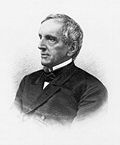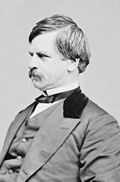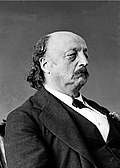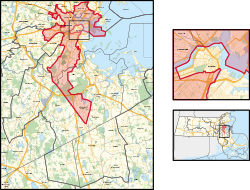Top Qs
Timeline
Chat
Perspective
Massachusetts's 7th congressional district
U.S. House district for Massachusetts From Wikipedia, the free encyclopedia
Remove ads
Massachusetts's 7th congressional district is a congressional district located in eastern Massachusetts, including roughly three-fourths of the city of Boston and a few of its northern and southern suburbs. The seat is currently held by Democrat Ayanna Pressley.
Remove ads
Due to redistricting after the 2010 census, the borders of the district were changed, with most of the old 7th district redistricted to the new 5th district,[3] and most of the old 8th district comprising the new 7th district. With a Cook Partisan Voting Index rating of D+34, it is the most Democratic district in Massachusetts, a state with an all-Democratic congressional delegation.[2]
According to The Boston Globe and the latest census data, approximately 33 percent of the population of the district were born outside of the United States, with approximately 34 percent of the population white, 26 percent African American, and 21 percent Latino.[4]
In 2019, Ayanna Pressley became the first female and person of color to represent the district as well as the Commonwealth of Massachusetts in Congress.[5]
Remove ads
Recent election results from statewide races
Remove ads
Cities and towns in the district
For the 118th and successive Congresses (based on redistricting following the 2020 census), the district contains all or portions of three counties and 7 municipalities:[7]
Middlesex County (3)
- Cambridge (part; also 5th), Everett, Somerville
Norfolk County (2)
Suffolk County (2)
Cities and towns in the district prior to 2013
Summarize
Perspective
1790s-1830s
This section needs expansion. You can help by adding to it. (November 2013) |
1840s
1849: "The whole of Berkshire County; Ashfield, Buckland, Charlemont, Coleraine, Conway, Hawley, Heath, Leyden, Monroe, Rowe, and Shelburne, in Franklin County; Chesterfield, Cummington, Goshen, Middlefield, Norwich, Plainfield, Southampton, Westhampton, Williamsburg, and Worthington, in Hampshire County; and Blandford, Chester, Granville, Montgomery, Russell, and Tolland, in the County of Hampden."[8]
1850s–1880s
An act of the legislature passed April 22, 1852, divided the 7th district of Massachusetts as such: "The towns of Andover, Boxford, Bradford, Danvers, Haverhill, Lawrence, Lynnfield, Methuen, Middleton, Saugus, and Topsfield in the county of Essex; and the city of Charlestown, and the towns of Burlington, Lexington, Malden, Medford, Melrose, Reading, Somerville, South Reading, Stoneham, Waltham, and Woburn, in the county of Middlesex."[9]
1890s

1893: "Essex County: Towns of Lynn, Nahant, and Saugus. Middlesex County: Towns of Everett, Malden, Melrose, Stoneham, and Wakefield. Suffolk County: 4th and 5th wards of the city of Boston, and the towns of Chelsea and Revere."[10]
1910s
1916: In Essex County: Boxford, Lawrence, Lynn, Lynnfield, Middleton, Nahant, North Andover, Peabody, Saugus. In Middlesex County: North Reading.[11][12]
1940s
1941: In Essex County: Lawrence, Lynn (part), Middleton, Nahant, North Andover, Peabody. In Suffolk County: Chelsea, Revere, Winthrop.[13]
1950s-2002
This section needs expansion. You can help by adding to it. (November 2013) |
2003-2013

In Middlesex County:
- Arlington
- Belmont
- Everett
- Framingham
- Lexington
- Lincoln
- Malden
- Medford
- Melrose
- Natick
- Stoneham
- Waltham
- Watertown
- Wayland: Precinct 2
- Weston
- Winchester
- Woburn
In Suffolk County:
List of members representing the district
Remove ads
Recent election results
2012
2014
2016
2018
2020
2022
2024
Remove ads
Notes
- In the 1808 election, there were 430 votes for "Charles Turner," which were counted separately from Charles Turner Jr. (Democratic-Republican). This caused the vote tally to be William Baylies (Federalist) 1,828 (49.4%), Charles Turner Jr. (Democratic-Republican) 1,443 (39.0%), "Charles Turner" 430 (11.6%).[citation needed] As no candidate had a majority, a second election was held on January 19, 1809, which elected Baylies with 54.3% of the vote.Turner successfully contested this election and was subsequently declared the winner based on the first ballot, with the second invalidated. He was seated June 8, 1809[14]
Remove ads
References
External links
Wikiwand - on
Seamless Wikipedia browsing. On steroids.
Remove ads


































